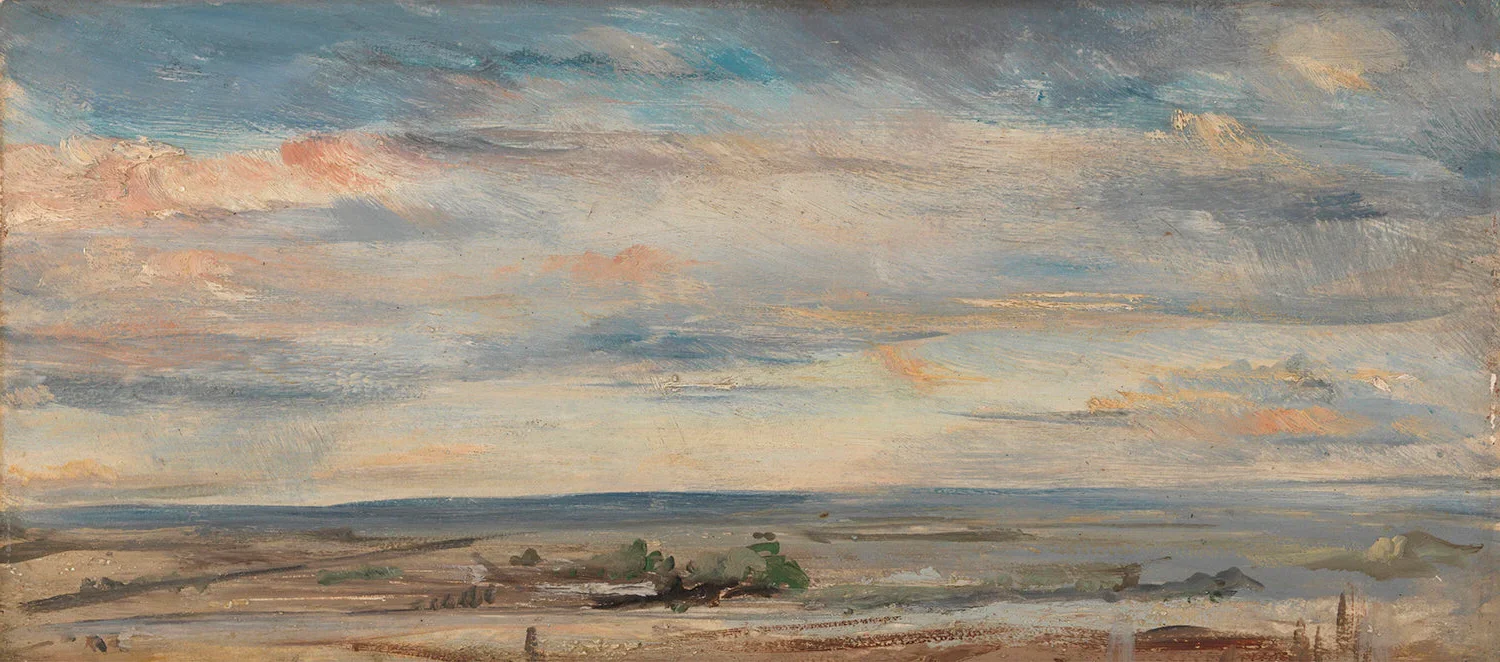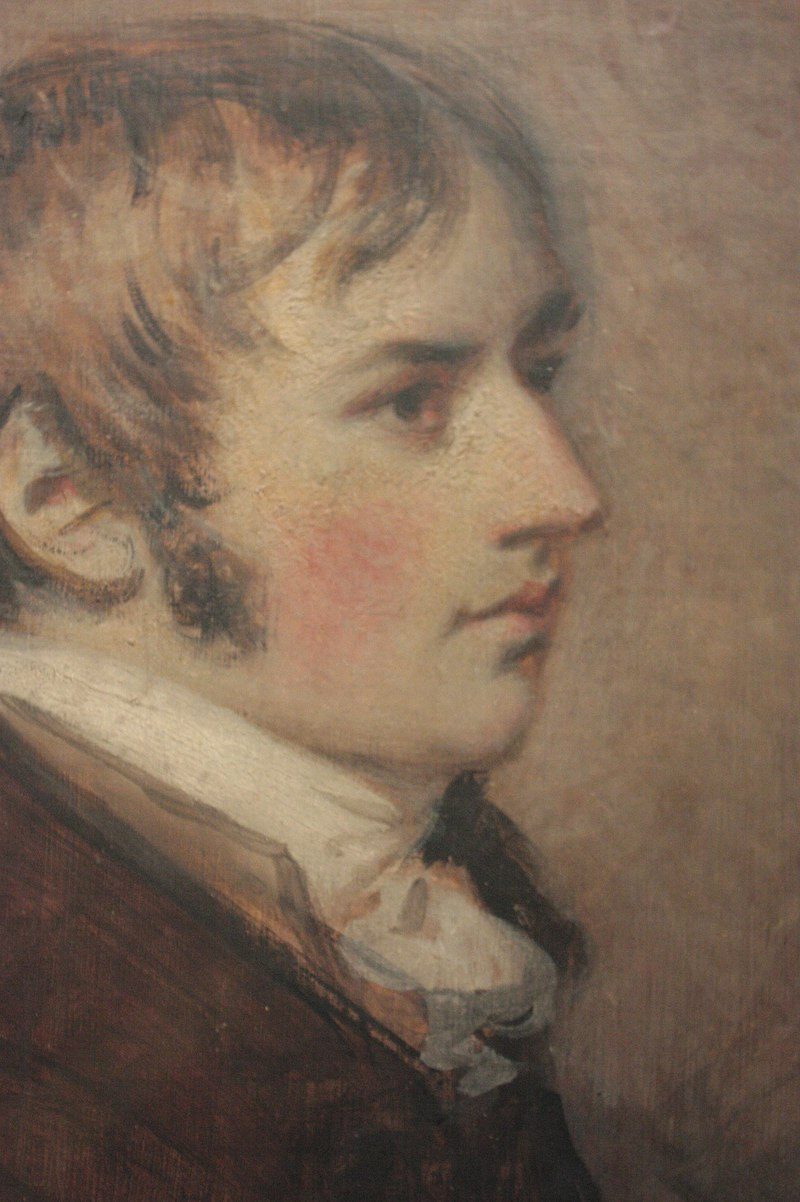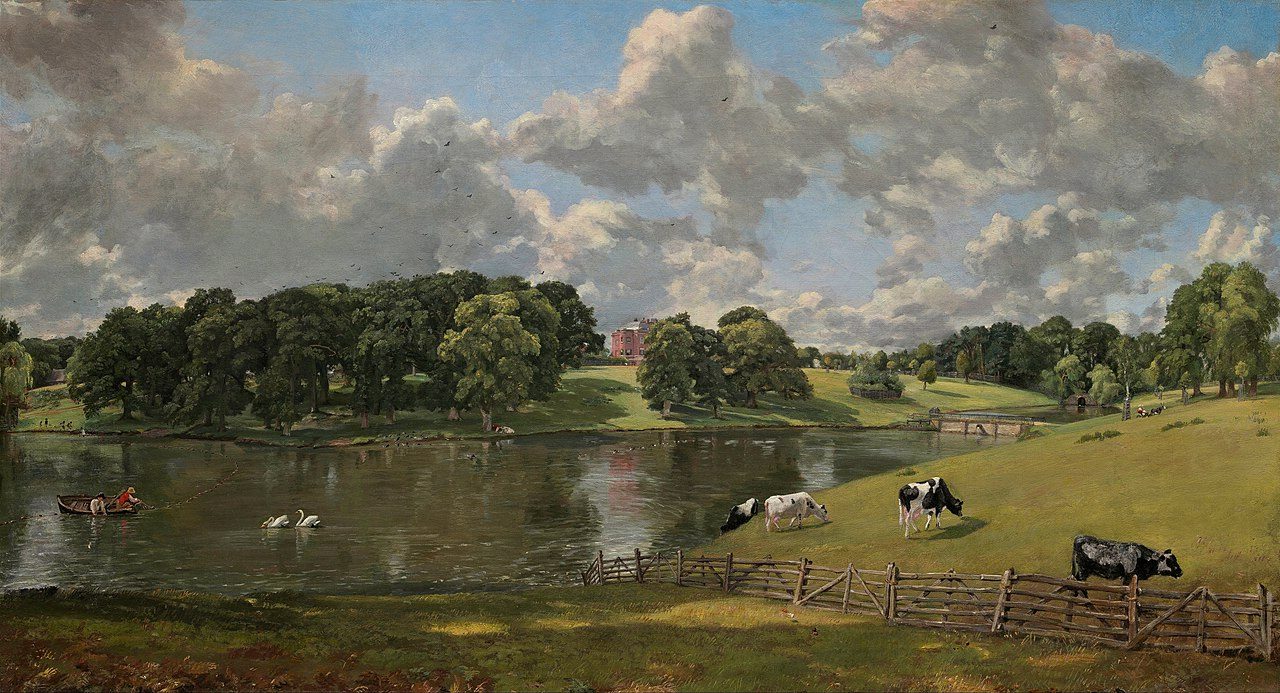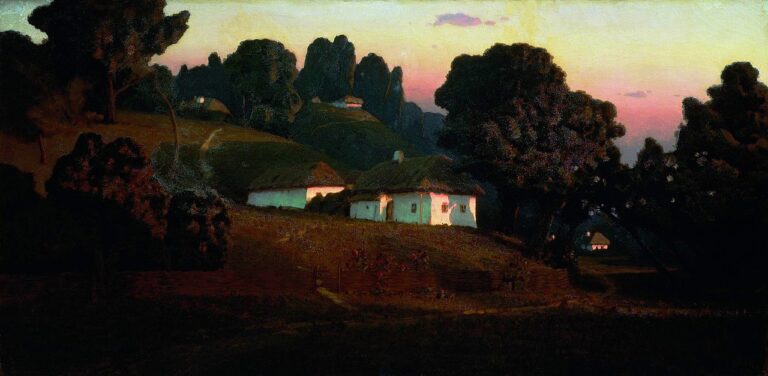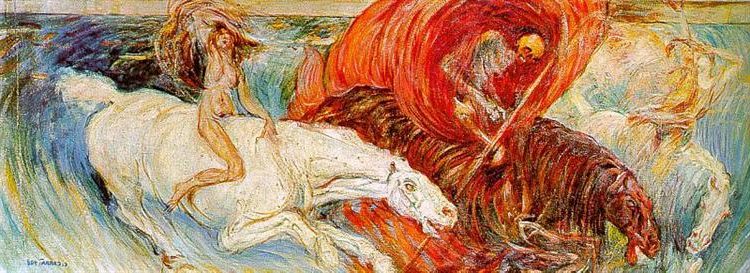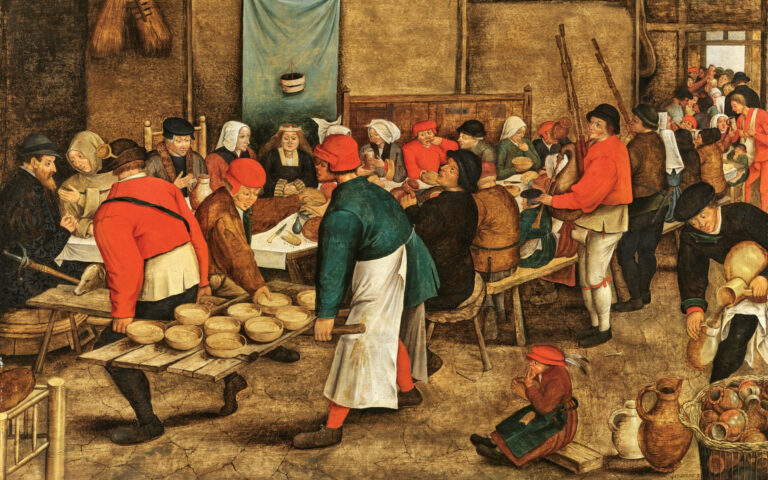John Constable Painter: The Influential English Landscape Artist of the 19th Century
Born: 11 June 1776, East Bergholt, Suffolk, England
Death: 31 March 1837, London, England
Art Movement: Romanticism
Nationality: British
Influenced By: Claude Lorrain
Institution: Royal Academy of Arts
John Constable Painter: The Influential English Landscape Artist of the 19th Century
Early Life and Education
John Constable’s formative years in Suffolk shaped his artistic vision and connection to rural landscapes. His formal training and early experiences established the foundation for his revolutionary approach to English landscape painting.
Birth and Family Background
John Constable was born on June 11, 1776, in East Bergholt, Suffolk, England. He grew up as the second son among six children of Golding Constable and Ann Watts.
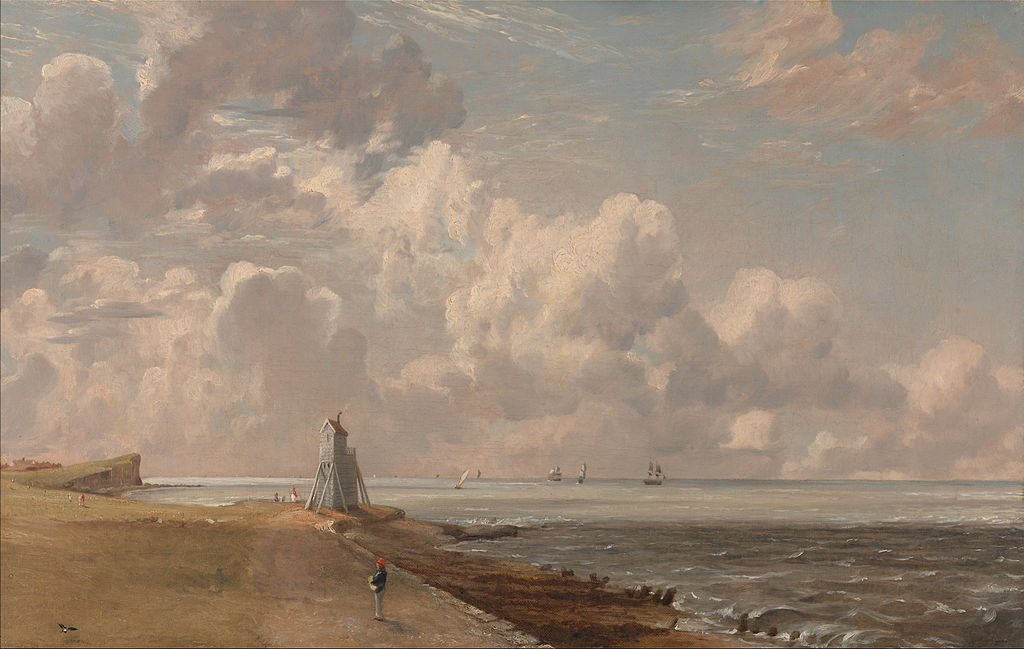
Harwich Lighthouse (1820) by John Constable
His father was a wealthy corn merchant who owned Flatford Mill on the River Stour. This rural setting in Suffolk would later become a significant inspiration for many of Constable’s most famous landscape paintings.
The Constable family was prosperous, which eventually allowed John to pursue his artistic interests despite initial expectations that he would join the family business.
Artistic Influences and Training
Before formally studying art, Constable spent seven years working in his father’s corn business. During this time, he developed his observational skills while sketching the Suffolk countryside.
In 1799, at the age of 23, he finally persuaded his father to let him pursue a career as an artist. This marked a turning point in his life.
Early influences on Constable included the works of Thomas Gainsborough, another Suffolk-born artist, and the Dutch landscape masters. He also admired Claude Lorrain’s idealized classical landscapes.
Constable began his formal artistic education by copying Old Masters, a standard practice for developing artists at that time.
Royal Academy Schools and Early Career
In 1799, Constable entered the Royal Academy Schools in London as a probationer. There, he attended life classes and anatomical dissections to improve his understanding of the human form.

The Opening of Waterloo Bridge (c. 1832) by John Constable
He studied and copied works by masters such as Ruisdael, Claude, and Rubens at the Royal Academy. These studies helped refine his technique while he developed his distinctive approach to landscape painting.
Though he aspired to win the prestigious Gold Medal at the Academy, Constable focused increasingly on landscapes rather than the historical subjects that were more highly regarded at the time.
By the early 1800s, he had begun exhibiting his paintings at the Royal Academy’s annual exhibitions, starting his professional career as a landscape artist with a fresh, naturalistic approach.
Major Works and Artistic Style
John Constable revolutionized landscape painting through his dedication to natural observation and emotional connection to the English countryside. His techniques and subject choices established him as one of the most important Romantic painters of his time.
Landscapes and Techniques
Constable’s approach to landscape painting was groundbreaking in its dedication to direct observation. He made numerous outdoor sketches, studying how light affected the Suffolk countryside where he grew up.
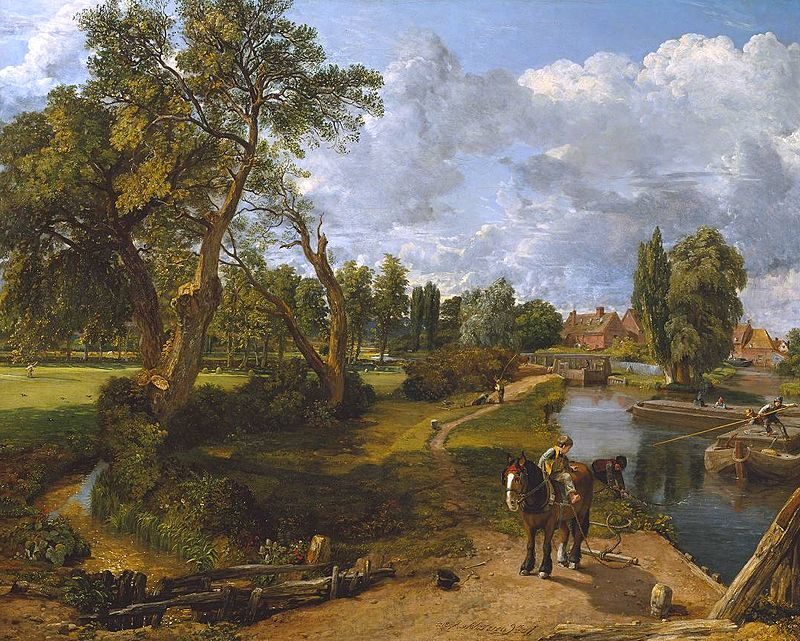
Flatford Mill (Scene on a Navigable River) (c. 1816) by John Constable
Unlike many contemporaries, Constable rejected idealized landscapes in favor of authentic rural scenes.
His technique evolved to include distinctive brushwork with short strokes and textured surfaces. He often painted wet-in-wet, building layers of paint to capture atmospheric effects.
Constable was particularly fascinated by clouds, creating numerous cloud studies that recorded specific weather conditions and times of day.
The painter used a surprisingly limited color palette, focusing on greens, blues, and earthy tones to achieve realism. His attention to changing light conditions and weather set him apart from earlier landscape traditions.
Notable Paintings
Constable produced several masterpieces that defined his career and artistic vision. “Wivenhoe Park” (1816) demonstrated his ability to balance detailed observation with compositional harmony. The painting depicts the Essex estate with remarkable attention to reflection and light.
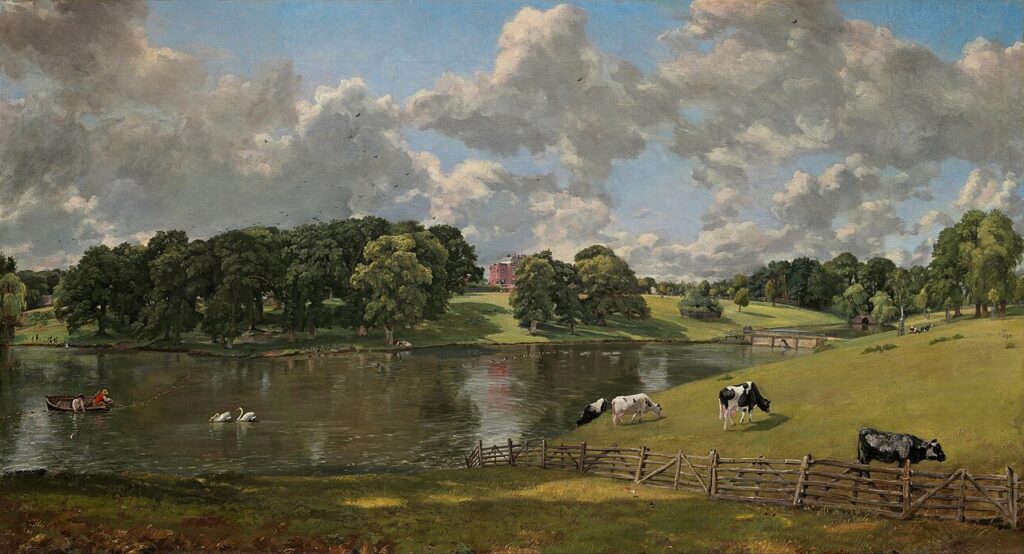
Wivenhoe Park (1816) by John Constable
“Salisbury Cathedral from the Meadows” (1831) represents one of his most dramatic works, featuring the cathedral beneath a stormy sky with a rainbow. This painting combines precise architectural detail with powerful emotional atmosphere.
“The Opening of Waterloo Bridge” (1832) showed Constable’s rare venture into urban landscapes, depicting a ceremonial scene with his characteristic attention to light and atmosphere.
His paintings of Dedham Vale and scenes around East Bergholt form a significant portion of his work, reflecting his deep connection to his birthplace.
The Hay Wain and Its Significance
“The Hay Wain” (1821) stands as Constable’s most famous painting and a defining work of English Romantic art. This oil on canvas depicts a horse-drawn cart (the hay wain) crossing a shallow river beside a cottage in Suffolk. The scene captures a quintessential English rural landscape near Flatford Mill in the Dedham Vale.

The Hay Wain (1821) by John Constable
Initially receiving little attention in England, the painting gained recognition when exhibited in Paris in 1824, influencing French Romantic painters. The work’s detailed observation of nature and celebration of rural English life made it revolutionary.
Today housed in London’s National Gallery, “The Hay Wain” has become an iconic image of the English countryside. Its balance of naturalistic detail with atmospheric effects demonstrates Constable’s mastery of landscape painting.
Innovations in Landscape Painting
Constable’s greatest innovation was his insistence on painting directly from nature. Unlike predecessors who composed idealized scenes, he sought to capture the actual appearance of light, weather, and landscape elements.
His studies of clouds were particularly groundbreaking. Constable made numerous quick oil sketches of skies, noting precise weather conditions and times on the backs of his works. These studies informed his larger compositions and showed his scientific interest in atmospheric effects.
While influenced by earlier masters like Claude Lorrain, Constable moved beyond their formulaic approaches. His emotional connection to specific locations created a new approach to landscape that valued authenticity over classical ideals.
His use of impasto and expressive brushwork anticipated later developments in painting, influencing the Barbizon School and eventually Impressionism.
Personal Life and Legacy
John Constable’s life beyond the canvas reveals a man devoted to family and art despite numerous challenges. His personal relationships and artistic vision shaped both his career and his lasting impact on landscape painting.
Marriage to Maria Bicknell
John Constable’s relationship with Maria Bicknell began in 1809, but faced strong opposition from her grandfather, Dr. Durand Rhudde. Maria’s family feared that a marriage to an artist would lead to financial instability. Despite these obstacles, the couple continued their relationship through letters for seven years.
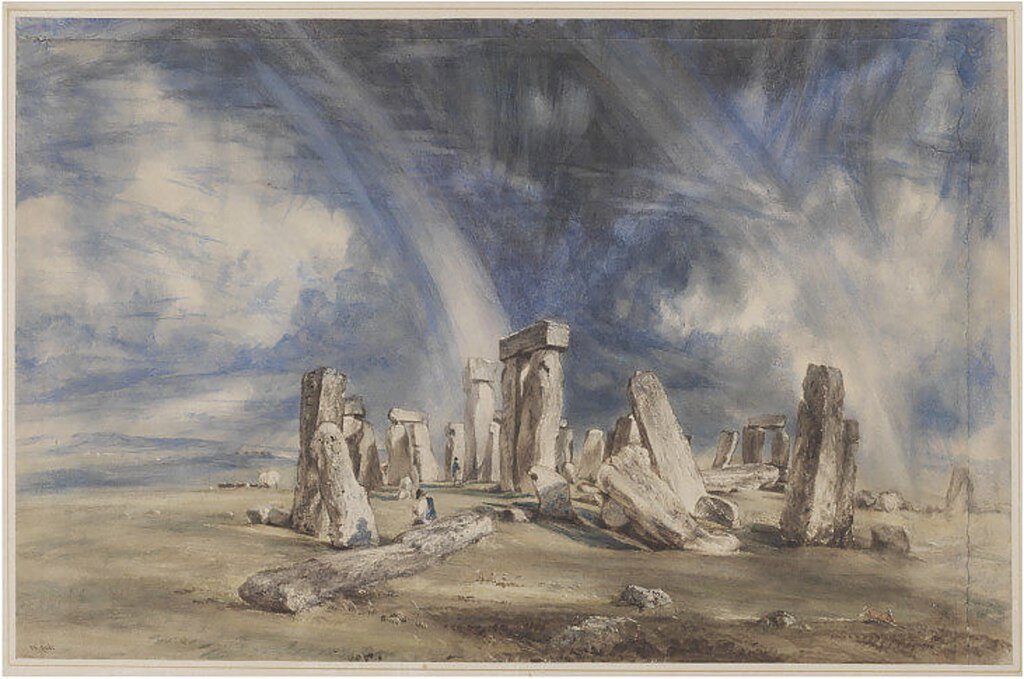
Stonehenge (1835) by John Constable
They finally married in October 1816 at St. Martin-in-the-Fields in London, after Constable received an inheritance from his father’s death. This financial security helped ease the family’s concerns.
The couple had seven children together. Their marriage was marked by deep affection and mutual support, with Maria encouraging Constable’s artistic pursuits despite ongoing financial struggles.
Maria’s health was fragile throughout their marriage. She suffered from tuberculosis, which ultimately claimed her life in 1828. Her death devastated Constable and affected both his personal happiness and artistic output.
Friendships and Patrons
Sir George Beaumont, a wealthy art collector, became an important patron and friend to Constable. Though they occasionally disagreed on artistic matters, Beaumont’s support proved valuable to Constable’s career development.
John Dunthorne, a local plumber and glazier from Suffolk, was one of Constable’s closest friends from childhood. They often painted outdoors together, with Dunthorne encouraging Constable’s direct observations of nature.
The landscape painter Benjamin Fisher also maintained a close friendship with Constable, sharing technical approaches and artistic philosophies. Their correspondence reveals deep mutual respect.
Constable’s relationship with the Royal Academy evolved throughout his career. While his work wasn’t always well-received initially, he was elected as an Associate of the Royal Academy in 1819 and became a full Academician in 1829, at the relatively late age of 52.
Influence and Recognition
Constable’s innovative approach to landscape painting found more immediate appreciation in France than in England. His works displayed at the Paris Salon of 1824 won a gold medal and influenced the emerging French Romantic painters, particularly Eugène Delacroix.
His technique of capturing atmospheric conditions and light effects through visible brushstrokes and layered paint application revolutionized landscape painting. These methods prefigured aspects of Impressionism decades later.
Constable insisted on painting directly from nature rather than following classical compositional rules. This approach represented a significant break from academic traditions of idealized landscapes.
After settling in Hampstead in 1821, Constable produced numerous cloud studies that demonstrated his scientific interest in meteorology. These works combine careful observation with emotional response to nature, embodying his belief that “painting is but another word for feeling.”
Death and Posthumous Fame
Constable never fully recovered emotionally from Maria’s death in 1828. His later years were marked by increasing recognition but also by health problems and continued financial concerns.
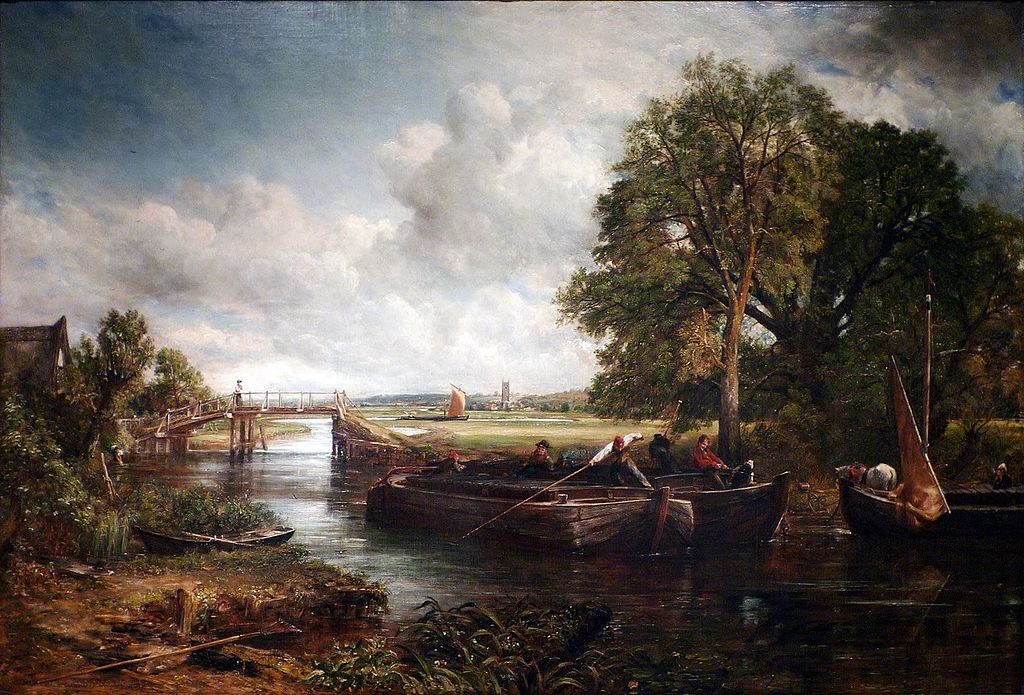
View on the Stour near Dedham (1822) by John Constable
He died on March 31, 1837, at the age of 60 from heart failure. He was buried beside Maria in the churchyard of St. John’s Church in Hampstead, London.
Following his death, Constable’s artistic reputation grew steadily. His son Charles published “English Landscape Scenery” in 1833, helping to preserve and promote his father’s legacy.
Today, Constable is recognized as one of Britain’s greatest landscape painters. His works command high prices at auction and are featured prominently in major museums worldwide. The areas he painted in Suffolk are now known as “Constable Country,” attracting tourists and art lovers who wish to see the landscapes that inspired his masterpieces.
Frequently Asked Questions
John Constable left a rich legacy of artwork and historical significance. Collectors, art enthusiasts, and scholars continue to study his paintings and techniques while seeking answers to common questions about his life and work.
What are some of the most notable landscapes painted by John Constable?
“The Hay Wain” (1821) stands as Constable’s most recognized masterpiece. This painting depicts a farm wagon crossing a shallow river in the English countryside.
“Dedham Vale” (1802) showcases the Suffolk landscape that Constable loved, featuring rolling hills and the River Stour.
“Salisbury Cathedral from the Meadows” (1831) displays dramatic weather conditions with a rainbow arching over the cathedral, combining natural elements with architecture.
“Flatford Mill” (1817) captures the industrial-rural intersection at his father’s mill, which was a frequent subject in his work.
How can one identify an authentic John Constable signature on his artworks?
Constable typically signed his completed exhibition works as “John Constable” in the lower corners of his paintings. The signature appears in a flowing, consistent hand.
His sketches and studies often remained unsigned, making authentication more challenging for these works.
Experts look for his distinctive brushwork and painting technique when authenticating unsigned pieces. His unique handling of light, cloud formations, and natural textures serves as a “fingerprint” of sorts.
What is known about any missing artworks attributed to John Constable?
Several Constable sketches and studies remain unaccounted for, believed to have been dispersed after his death in 1837.
Art historians estimate dozens of his preparatory works may exist in private collections, unrecognized as authentic Constables.
Occasionally, previously unknown Constable paintings appear at auctions or estate sales, causing excitement in the art world. These discoveries require rigorous authentication processes.
Can you provide some interesting facts about John Constable’s life and career?
Constable found little success in England during his lifetime but was highly regarded in France, where his work influenced the Barbizon School painters.
He created numerous cloud studies as independent works, carefully noting weather conditions on the backs of these paintings.
Constable rejected traditional artistic tours to Italy, preferring to paint the English countryside he knew intimately.
His wife’s death in 1828 deeply affected him, and his later works often carried more emotional and somber tones.
What is the market value of John Constable’s paintings in the current art world?
Major Constable paintings command extraordinary prices at auction. “The Lock” sold for £22.4 million ($31.8 million) in 2012, setting a record for his work.
Even his smaller sketches and studies can sell for hundreds of thousands of dollars, reflecting his importance in art history.
Museum-quality Constable landscapes rarely come to market, making them extremely valuable when they do appear for sale.
How many paintings are credited to John Constable’s artistic oeuvre?
Art historians have documented approximately 300 finished oil paintings in Constable’s body of work.
In addition, over 2,000 sketches and watercolor studies are attributed to him. These show his dedication to observing and recording nature.
Many of these works are held in major collections. For example, the Victoria and Albert Museum houses the largest collection of Constable’s work, including his famous sketch-books.

